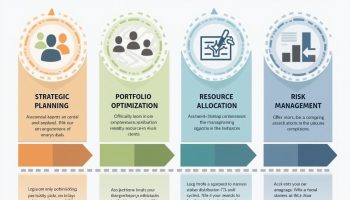Many business owners go through life without having to make go/no-go decisions. This is because they are not in positions of responsibility, where there is a lot at stake with every decision made.
However, for those who do hold positions of responsibility, go/no-go decisions can be very difficult and stressful. The following blog post will provide you with information on what constitutes a go/no-go decision and how to use it in business effectively.
What is the Go/No-Go Decision?
A go/no go decision is one that requires you to choose between two options, where both are undesirable. This can be in regard to a project or business activity, and will generally result in either success or failure.
As a business owner, go/no go decisions can be difficult to make. A go/no go decision is when you have two options, you’ve to choose one of those options as the best option. This decision will vary depending on the situation but there are some general guidelines that apply:
If both choices present significant risks then you need to select with careful consideration. Consider which choice has less risk or which choice could produce better results with lower risk before making your final decision.
If both choices present minimal risk then either option may work depending on other factors such as budget, timeline, etc.
In this case, go with your gut feeling and select one of the options.
An important thing to remember is that a go/no go decision does not have to be made immediately or without thought. You should always consider all factors before making a go/no go decision. This includes being sure you don’t neglect any possible consequences for either option.
If you can take time to think about it then do so! Even if it’s just five minutes during your morning commute on the train or bus. You should use those five minutes wisely by thinking through each choice slowly and carefully.
Some common situations of this decisions:
The go/no go decision is a crucial part of the business. It’s something that we all need to know how to use and understand in order to be successful.
The following are common situations where go/no go decisions arise:
- Two different projects will achieve similar results but one has more risks than the other.
- Two different projects will achieve similar results but one is more expensive than the other.
- Again, Two products are produce from a single line in your factory. But one would take longer to produce and go over budget while the other wouldn’t go over budget or time constraints.
You have two choices when it comes to marketing for new clients. You could go with either an online campaign or an offline campaign that costs much less money compared to going with both options.
Both campaigns are very likely to bring in new business so go/no go decisions need to be made based on;
How soon these potential customers can become paying ones? Also what if they’ll come back later down the road after their initial purchase?
What is the use of Go/No-Go Decision?
Go/No go decisions can be useful when it comes to planning, as they provide a way in which you can plan around the possible outcomes of failure. This means that you will have everything planned out should an undesirable outcome occur. This is also known as contingency planning.
These are also useful in the realm of problem-solving. Many times when problems come up, you’ll have to make decisions in order to solve them.
For example: if there is a problem that arises during production then it can be dealt with by either stopping or continuing depending on what the go/no go decision may be.
Finally, Go no go decisions are used for risk assessment which will allow businesses and individuals alike to avoid risks where possible. So they don’t incur any unnecessary costs later down the road should something happen unexpectedly.
Benefits of using Go/No-Go Decision:
The go/no go decision is a decision-making process and an instrument for solving problems. It is most;y made at the beginning of a project, after which it is too late to make major changes to design or strategy.
The go/no go decision may also be applied as an alternative to more formal risk management techniques. These techniques include cost-benefit analysis or quantitative risk assessment where data availability is poor or prohibitively expensive.
As with other types of decisions, go/no go decisions can be difficult because they involve tradeoffs among conflicting objectives: on one hand, you want to minimize risks and costs. However, on the other hand, you want to maximize your chances for success.
Here, the focus is on assessing whether a project has passed key milestones that tell you if it is still worth pursuing.
In other words, this process helps to determine if a project should be killed as soon as possible or continue with its development and implementation. This way go/no go decisions avoid wasting too much time and money in the wrong direction.
Conclusion:
Go/no go decision helps you in making a decision within the limitations of your knowledge. In other words, it allows you to make better-informed business and financial decisions by providing greater flexibility for risk management.
FAQ’s
Is the go/no go decision is waste of time?
Go/No-Go decision is a process and instrument for solving business problems. It’s most often made at the beginning of the project, after which it is too late to make major changes in design or strategy. They help to assess whether projects have passed key milestones that tell if it is still worth pursuing. In other words, this process makes sure not to waste time and money in the wrong direction.
When does a project need to take a Go/No-Go Decision?
Go no go decision is usually made at the beginning of a project, after which it’s too late to make major changes in design or strategy. They help you assess whether projects have passed important milestones. It tells if it’s worth pursuing development and implementation.
Can go/no go decisions be wrong?
Yes, Go/No-Go decisions are only able to provide greater flexibility for risk management. But they cannot guarantee success especially when there is very little knowledge available within certain limitations. It can’t predict future events accurately so it may lead businesses down a path.






